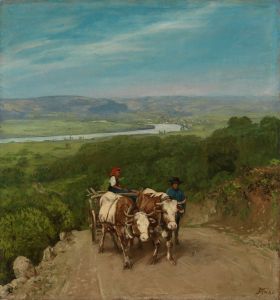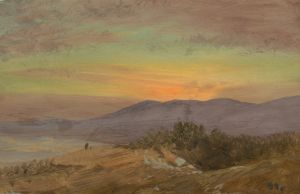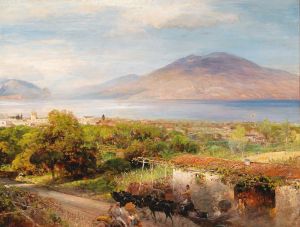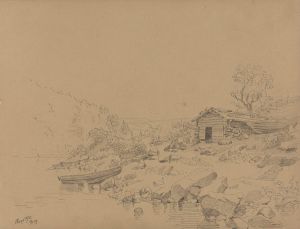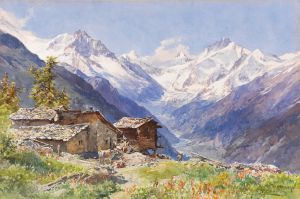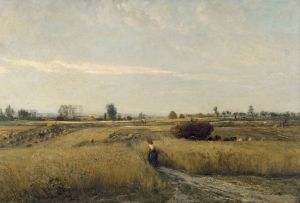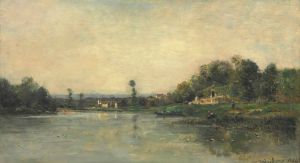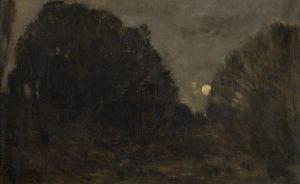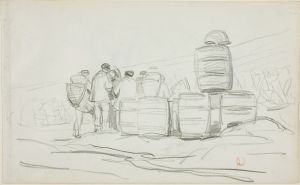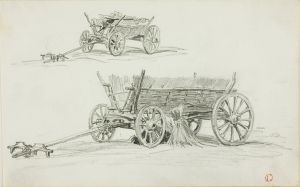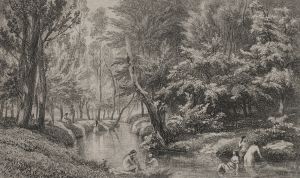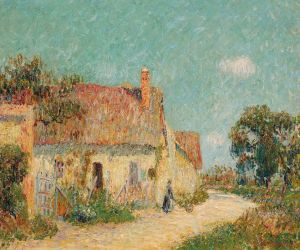
Bords Du Fleuve
A hand-painted replica of Charles François Daubigny’s masterpiece Bords Du Fleuve, meticulously crafted by professional artists to capture the true essence of the original. Each piece is created with museum-quality canvas and rare mineral pigments, carefully painted by experienced artists with delicate brushstrokes and rich, layered colors to perfectly recreate the texture of the original artwork. Unlike machine-printed reproductions, this hand-painted version brings the painting to life, infused with the artist’s emotions and skill in every stroke. Whether for personal collection or home decoration, it instantly elevates the artistic atmosphere of any space.
"Bords Du Fleuve" (Banks of the River) is a painting by the French artist Charles François Daubigny, a prominent figure in the Barbizon School. Daubigny, born in Paris in 1817, was known for his landscape paintings and played a significant role in the development of the naturalistic style that characterized the Barbizon School. This movement was named after the village of Barbizon near the Forest of Fontainebleau, where many artists gathered to paint directly from nature.
"Bords Du Fleuve" exemplifies Daubigny's dedication to capturing the serene and unembellished beauty of the French countryside. The painting depicts a tranquil river scene, likely inspired by the Oise River, which Daubigny frequently painted. His works often feature calm waters, lush greenery, and expansive skies, reflecting his deep appreciation for the natural world.
Daubigny's technique in "Bords Du Fleuve" showcases his skillful use of light and shadow to create depth and atmosphere. The composition is balanced, with the river leading the viewer's eye into the distance, inviting contemplation and a sense of peace. The soft, muted colors and delicate brushwork are characteristic of Daubigny's style, emphasizing the harmonious relationship between land and water.
Charles François Daubigny was a precursor to the Impressionist movement, and his approach to painting en plein air (outdoors) influenced many younger artists, including Claude Monet and Camille Pissarro. Daubigny's willingness to paint directly from nature and his focus on capturing the transient effects of light and weather were innovative for his time and paved the way for the Impressionists' more radical techniques.
Throughout his career, Daubigny received numerous accolades and exhibited regularly at the Paris Salon. His works were well-received by critics and collectors alike, and he was awarded the Legion of Honor in 1859. "Bords Du Fleuve" is a testament to his mastery of landscape painting and his ability to convey the quiet beauty of the natural world.
Today, Daubigny's paintings, including "Bords Du Fleuve," are held in high regard and can be found in major museums and private collections around the world. His contributions to the art world continue to be celebrated, and his influence on subsequent generations of artists is widely recognized.
In summary, "Bords Du Fleuve" by Charles François Daubigny is a quintessential example of the artist's landscape work, reflecting his commitment to naturalism and his influence on the development of modern art. The painting captures the serene beauty of a river scene with skillful use of light, color, and composition, embodying the principles of the Barbizon School and foreshadowing the innovations of the Impressionist movement.





